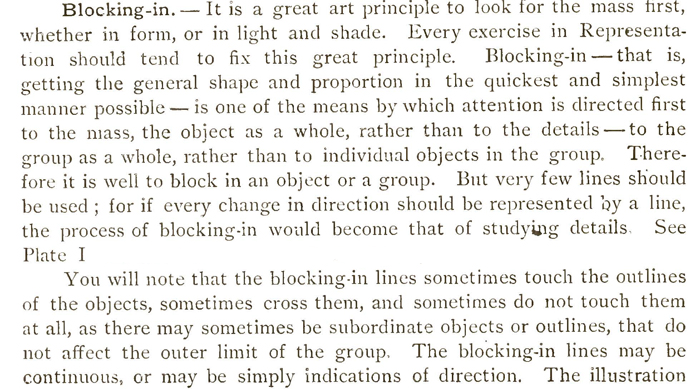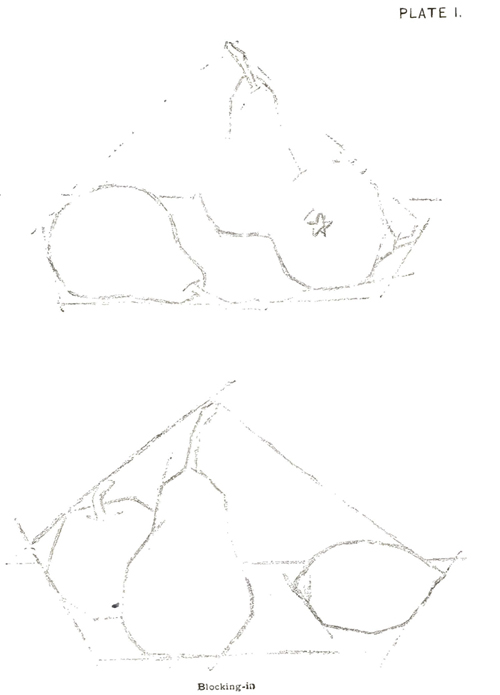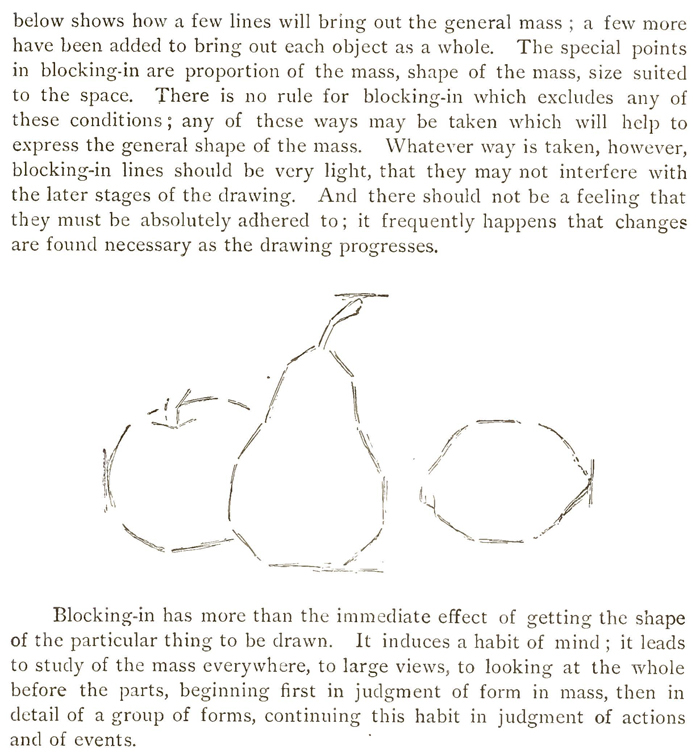Home > Directory of Drawing Lessons > How to Improve Your Drawings > Blocking-In Forms > Blocking-In for Drawing Basic Shapes First
A Tutorial for Beginning Drawings by Blocking-In the Forms and Basic Mass of the Shapes First - Then Adding the Details Later
|
|
The text above is made up of images, to copy some text, it is below. Blocking-in.It is a great art principle to look for the mass first, whether in form, or in light and shade. Every exercise in Representation should tend to fix this great principle. Blocking-in — that is, getting the general shape and proportion in the quickest and simplest manner possible — is one of the means by which attention is directed first to the mass, the object as a whole, rather than to the details—to the group as a whole, rather than to individual objects in the group. Therefore it is well to block in an object or a group. But very few lines should be used ; for if every change in direction should be represented by a line, the process of blocking-in would become that of studying details, See Plate I. You will note that the blocking-in lines sometimes touch the outlines of the objects, sometimes cross them, and sometimes do not touch them at all, as there may sometimes be subordinate objects or outlines, that do not affect the outer limit of the group. The blocking-in lines may be continuous, or may be simply indications of direction. The illustration below shows how a few lines will bring out the general mass ; a few more have been added to bring out each object as a whole. The special points in blocking-in are proportion of the mass, shape of the mass, size suited to the space. There is no rule for blocking-in which excludes any of these conditions ; any of these ways may be taken which will help to express the general shape of the mass. Whatever way is taken, however, blocking-in lines should be very light, that they may not interfere with the later stages of the drawing. And there should not be a feeling that they must he absolutely adhered to ; it frequently happens that changes are found necessary as the drawing progresses. Blocking-in has more than the immediate effect of getting the shape of the particular thing to be drawn. It induces a habit of mind ; it leads to study of the mass everywhere, to large views, to looking at the whole before the parts, beginning first in judgment of form in mass, then in detail of a group of forms, continuing this habit in judgment of actions and of events. Rendering a DrawingOutline, Light and Dark, Light and Shade.There are three ways of carrying out a picture with pencil, pen, or brush in monotone—in outline, in light and dark, in light and shade. In outline, as has been said above, the lines should vary according to texture and importance and a slight expression of light and shade may also be given. In what is known as light and dark, color contrasts and values are shown by means of masses of light and dark, sometimes in two tones, sometimes in more. Examples of expression of color and of pleasing space relations by light and dark, will be found all through the drawing-books, notably in the illustrations from the Japanese and those by Arthuir W Dow.
|
Privacy Policy ...... Contact Us








